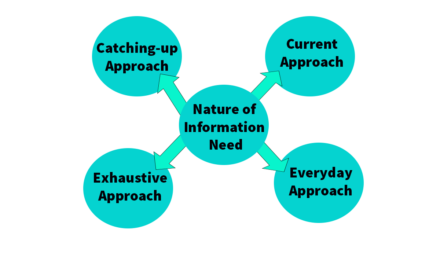An Overview of Academic Smart Libraries:
Academic smart libraries are modern libraries that use advanced technologies such as artificial intelligence, machine learning, the internet of things, and cloud computing to enhance their services and provide innovative solutions for their users. These libraries offer personalized recommendations, 24/7 access to library resources, enhanced search capabilities, shared research platforms, collaborative research tools, interactive learning tools, online tutorials, and access to digital collections. They also leverage social media integration, virtual events, and digital exhibitions to increase outreach and engagement with their users. Academic smart libraries provide an improved learning experience for students and researchers in academic institutions. In this article, we are going to explore an overview of academic smart libraries.
Definition of Academic Smart Libraries:
Academic smart libraries refer to advanced libraries that leverage cutting-edge technologies, such as artificial intelligence, machine learning, and big data, to provide enhanced services and resources to their users. These libraries use various tools and techniques to help students, researchers, and faculty members discover, access, and utilize academic information effectively.
Importance of Academic Smart Libraries:
Academic smart libraries play a crucial role in facilitating the learning and research processes of students, scholars, and researchers. These libraries provide access to a wide range of academic resources, including books, journals, research papers, and databases, that are essential for students and researchers to explore their fields of study, conduct research, and write papers and theses. Here are some key benefits of academic smart libraries:
- Access to high-quality resources: Academic smart libraries provide access to a vast collection of academic resources, including the latest research papers, journals, books, and other scholarly materials. This makes it easier for students and researchers to find the information they need to deepen their understanding of a particular topic.
- Efficient searching: Smart libraries use modern search tools and algorithms to enable efficient searching across their entire collection of resources. This means that students and researchers can quickly find the materials they need without wasting time searching through irrelevant or outdated resources.
- Collaboration: Smart libraries often provide collaborative tools that allow researchers to work together on projects, share resources, and exchange ideas. This can help to foster a sense of community and support among scholars, which can be invaluable in advancing research in a particular field.
- Accessibility: Academic smart libraries are often available 24/7 and can be accessed remotely, which makes it easier for students and researchers to access resources when they need them. This is particularly important for those who may be studying or conducting research from a remote location or who have busy schedules that make it difficult to visit a physical library.
- Research support: Smart libraries often provide additional research support services, such as reference assistance, interlibrary loan, and citation management tools. These services can help students and researchers to streamline their research process and ensure that their work is of the highest quality.
Technological Advancements in Academic Smart Libraries:
Academic smart libraries are integrating various advanced technologies to improve their services and meet the changing needs of users. Here are some of the technological advancements in academic smart libraries:
A. Artificial Intelligence: Artificial intelligence (AI) is one of the most promising technologies that can be used to improve academic smart libraries. AI can assist in automating routine tasks, such as cataloging and indexing of materials, and provide personalized recommendations for users. With AI, academic smart libraries can analyze user behavior to understand their interests and preferences and offer customized recommendations. AI can also be used for chatbots, virtual assistants, and predictive analytics, which can improve user experience and streamline library operations.
B. Machine Learning: Machine learning (ML) is a subset of AI that enables computers to learn from data without being explicitly programmed. ML can be used in academic smart libraries to enhance search capabilities, automate cataloging, and provide personalized recommendations. With ML, academic smart libraries can improve their recommendation systems by analyzing data on user behavior and preferences. ML can also be used to identify trends and patterns in user behavior, which can be used to improve library services and operations.
C. Internet of Things: The Internet of Things (IoT) refers to the interconnected network of physical devices, vehicles, buildings, and other objects embedded with sensors, software, and network connectivity. In academic smart libraries, IoT devices can be used to track the usage of library materials, monitor environmental conditions, and optimize the use of physical space. IoT can also be used to provide location-based services, such as wayfinding and finding available study spaces.
D. Cloud Computing: Cloud computing refers to the delivery of computing services over the internet. Academic smart libraries can benefit from cloud computing by reducing the need for physical hardware and software infrastructure. Cloud computing can enable academic smart libraries to store, manage, and share data more efficiently, while also providing cost savings. With cloud computing, academic smart libraries can also improve their disaster recovery and business continuity capabilities.
Opportunities for Academic Smart Libraries:
Academic smart libraries offer numerous opportunities for academic institutions and their users. These libraries provide improved library services, increased research collaboration, enhanced learning experiences, and increased outreach and engagement.
1. Improved Library Services:
- Personalized recommendations: Academic smart libraries use artificial intelligence and machine learning algorithms to analyze user behavior and suggest relevant resources based on their interests and search history. This feature helps users to find resources that are tailored to their needs, which saves them time and improves their overall experience.
- 24/7 access to library resources: Academic smart libraries provide users with round-the-clock access to library resources through online portals, which enables users to access resources at any time and from any location. This feature improves the availability of resources and helps users to conduct research more efficiently.
- Enhanced search capabilities: Academic smart libraries use advanced search algorithms that allow users to search for resources using keywords, filters, and other parameters. These algorithms make it easier for users to find the resources they need and ensure that search results are more accurate and relevant.
2. Increased Research Collaboration:
- Shared research platforms: Academic smart libraries provide users with shared research platforms that allow them to collaborate with other researchers and share their findings. These platforms facilitate the exchange of ideas and promote collaboration among researchers.
- Collaborative research tools: Academic smart libraries provide users with collaborative research tools that enable them to work together on research projects. These tools help researchers to share data, analyze findings, and collaborate on research papers.
- Digital preservation of research data: Academic smart libraries use cloud-based technologies to store and preserve research data. This feature ensures that research data is safe and secure and that it can be accessed and used in the future.
3. Enhanced Learning Experience:
- Interactive learning tools: Academic smart libraries provide users with interactive learning tools that enable them to engage with learning materials in new and innovative ways. These tools include interactive videos, simulations, and virtual reality environments that enhance the learning experience.
- Online tutorials and guides: Academic smart libraries provide users with online tutorials and guides that help them to develop their research and information literacy skills. These tutorials and guides are accessible from anywhere and at any time, which makes them a valuable resource for users.
- Access to digital collections: Academic smart libraries provide users with access to digital collections that include e-books, journals, and other resources. These collections are accessible from anywhere and at any time, which makes it easier for users to access the resources they need.
4. Increased Outreach and Engagement:
- Social media integration: Academic smart libraries use social media platforms such as Twitter, Facebook, and Instagram to engage with users and promote library resources and services. Social media integration helps to increase the visibility of the library and encourages users to engage with library resources and services.
- Virtual events and webinars: Academic smart libraries organize virtual events and webinars that provide users with opportunities to learn new skills and engage with library staff and other users. These events and webinars are accessible from anywhere and at any time, which makes them a valuable resource for users.
- Digital exhibitions and displays: Academic smart libraries create digital exhibitions and displays that showcase library resources and collections. These exhibitions and displays are accessible from anywhere and at any time, which makes it easier for users to explore library resources and collections.
Challenges and Risks for Academic Smart Libraries:
- Privacy and Security Concerns: Academic smart libraries store vast amounts of data, including personal information and sensitive research data. Therefore, ensuring the security and privacy of this information is essential.
- Cost of Implementation and Maintenance: Implementing and maintaining academic smart libraries can be expensive, requiring significant investments in technology and skilled staff.
- Limited Technological Infrastructure: Some academic institutions may lack the necessary technological infrastructure to support the implementation of smart libraries, creating challenges in providing seamless services to users.
- Resistance to Change: Users may be resistant to change, preferring traditional library resources and services over digital alternatives.
Future of Academic Smart Libraries:
The future of academic smart libraries looks promising, with the potential to transform learning and research by providing users with advanced and personalized services, promoting collaboration, and facilitating access to vast amounts of information.
You May Also Read the Following Article: Role of IoT in Smart Libraries
References:
- Zhang, L., Liu, Y., & Wen, Y. (2020). Academic smart library: A framework and its implementation. Information Processing & Management, 57(3), 102171.
- Xie, H., & Wang, Y. (2019). Exploring the development of smart libraries in higher education institutions. Library Management, 40(1/2), 79-90.
- Xu, M., Zhang, X., & Chen, Y. (2019). Research on the construction of university smart libraries in the era of big data. Advances in Social Science, Education, and Humanities Research, 202, 71-74.
- Lei, X., & Zhou, H. (2019). Smart library construction in colleges and universities based on big data technology. Journal of Higher Education, 40(5), 121-127.
- Zou, X., Zhang, X., & Ren, L. (2019). Research on the construction of smart libraries in colleges and universities in China. Journal of Intelligence, 38(1), 108-117.
- Li, Y., Li, D., & Chen, W. (2018). Building an academic smart library in the context of big data. Library Hi Tech, 36(1), 101-115.
- Wang, Y., & Xie, H. (2018). An overview of academic smart library development in China. Journal of Academic Libraries, 36(3), 69-74.
- Zheng, L., & Guo, Y. (2018). The development of smart libraries in China: Status, challenges, and future directions. Information Technology and Libraries, 37(4), 16-32.
- Li, Q., & Gao, Y. (2017). Smart libraries in the era of big data: An analysis of development and innovation. Journal of Academic Libraries, 35(3), 60-64.
- Yang, S., & Chen, L. (2017). The development and application of smart libraries in China. Library and Information Service, 61(9), 44-51.

Library Lecturer at Nurul Amin Degree College










